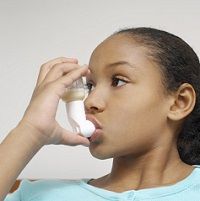Article
Atopy and Allergen Exposure Impact Asthma Severity in Children
Author(s):
Children with severe, persistent asthma in Memphis, TN, suffer an extremely high rate of atopy, according to a recent study. Clearer understanding of this relationship would allow physicians to employ more personalized and effective interventions.

Children with severe, persistent asthma in Memphis, TN, suffer an extremely high rate of atopy, according to a recent study. Conducted by Jennifer Lan, MD, of the Department of Allergy and Immunology at the University of Tennessee Health Science Center in Memphis, TN, and colleagues, the study was published recently in the journal Insights in Allergy, Asthma, and Bronchitis.
The researchers set out to conduct a pilot study which they claimed, “was undertaken to capture a sample of severe persistent asthmatics” in Memphis and the surrounding mid-south delta region. “Here we present clinical characterization of this cohort highlighting an alarmingly high prevalence of atopy in young children in this southern region of the US,” they added.
The pilot study drew 100 participants, between the ages of 3 and 18 years, each with severe asthma, from a single center. The researchers pointed out, “Interestingly, this population is noted to have multiple aeroallergen sensitizations.” They also noted that, “Out of the 97 patients who had aeroallergen testing, only 3 patients did not have any sensitivity detected on SPT, indicated that 97% of the population shad at least one aeroallergen sensitization.”
More children in Memphis have asthma than in many other places. The researchers reported, “Besides having one of the highest prevalence of asthma, it also appears to have the highest healthcare utilization secondary to inpatient asthma hospitalization and asthma emergency department visits in the state.” They also said one of the most interesting findings of the present study is the high rate of atopy they uncovered.
“The significant atopic nature in our population may help support the hypothesis that those with allergy driven disease in children in general are more inherently severe and therefore difficult to treat,” said the researchers. They added that there is a notable lack of scientific consensus, however.
In addition to atopy, the cohort overall quite young, with a mean age of 9 years, had a high prevalence of obesity (56% were either overweight or obese), and predominantly African American.
The researchers concluded, “The findings described here indicate that there are multiple personalized venues for intervention including aggressive early environmental changes and allergen immunotherapy during preschool years, weight control and social changes.” They further suggested that quicker approval of biologics for young children would be helpful in managing asthma.
Related Coverage:
Hospital Admission an Opportunity to Evaluate, Educate about Asthma’s Comorbidity Potential
Childhood Obesity and Risk of Allergy or Asthma
Asthma Increases Odds of Chronic Migraine




